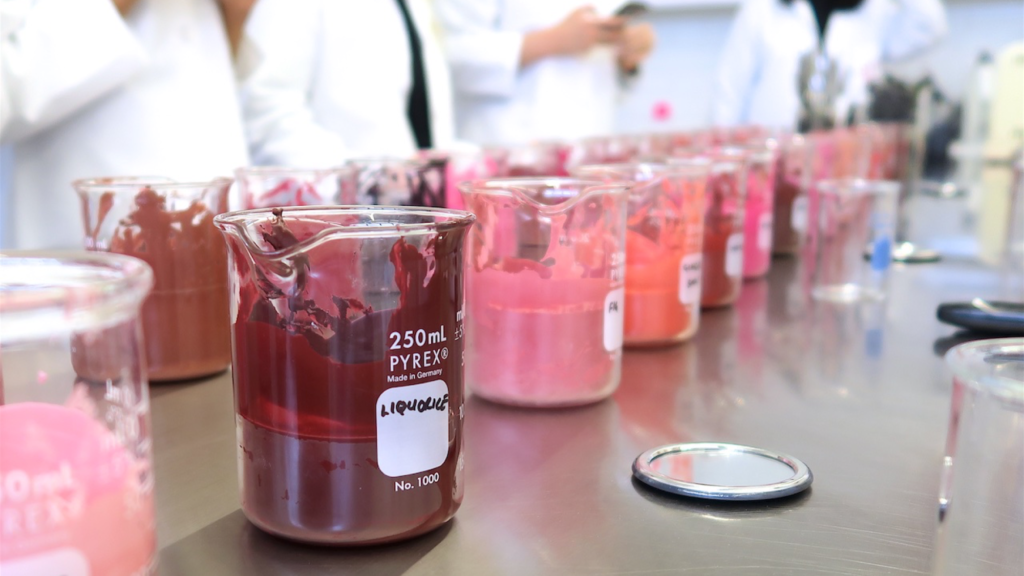From Labs to Lips: How Lipstick Is Made
Key Ingredients in Lipstick
|
Ingredient (Examples) |
Function |
| Waxes (Beeswax) | Hardens Lipstick and Provides Lasting Shape |
| Oil (Castor/Jojoba) | Smoothing Effect (Applying on Lips) |
| Waxy Pastes (Lanolin) | Helps Lipstick Adhere to Lips |
| Pigments (Carmine) | Coloring Agent |
| Antioxidants (Ascorbic Acid) | Maintains Lipstick Color/Texture in Air/Sunlight |
| Preservative (Paraben) | Prevent Bacteria Growth |
| Fragrance (Parfum/Linalool) | Enhance Smell |

- Different pigments are mixed together in powder form to create the perfect color. These pigments fall under the category of dry ingredients. The different pigment powders are weighed out and combined at very specific proportions to attain the same, even color every time. This is important so the hue can be replicated for future batches.
- A combination of solvents is mixed together. Solvents are used to help combine all the wet and dry ingredients in lipstick into one consistent, homogeneous mixture.
- The wet and dry ingredients are then combined in a beaker (small scale lab) or a vat (large scale manufacturing facility). They are mixed using a metal mixer blade. Sometimes, the ingredients may be mixed by hand with a spatula.
- After being mixed in beaker/vat, the formulation is passed through a roller mill 3-6 times to obtain optimal consistency.

- Wax is added to the formulation to help the lipstick maintain its shape in the tube. The mixture is placed in an oven (time in oven depends on the melting rate of wax).
- After the formulation has all its key ingredients added, it is poured into a metal mold with cylindrical holes. The liquid formulation slips down into the cylindrical holes and each mold fills with liquid lipstick. Once the mixture is in the metal mold it will cool and solidify. A chiller table can be used help the lipstick solidify faster.






- Once the lipstick has hardened, excess product is scraped off the top of the mold. Most of the time it can be saved and melted for a different batch.
- Cylindrical, metal rods of the same size and shape of the cylindrical mold push the lipstick out of the metal mold they were cast in. The lipsticks are then pushed into their applicators.
- The lipsticks will undergo a final test which examines its ability to twist out of the applicator and the overall appearance before they are packaged.



